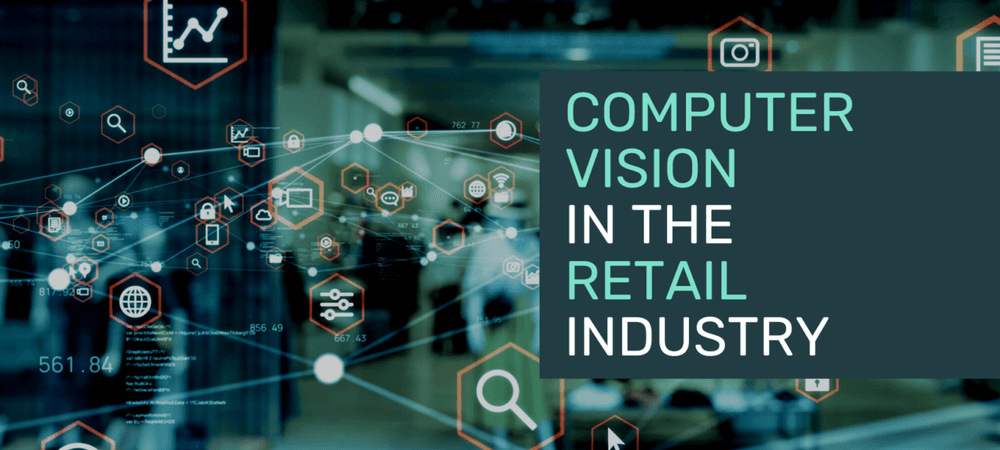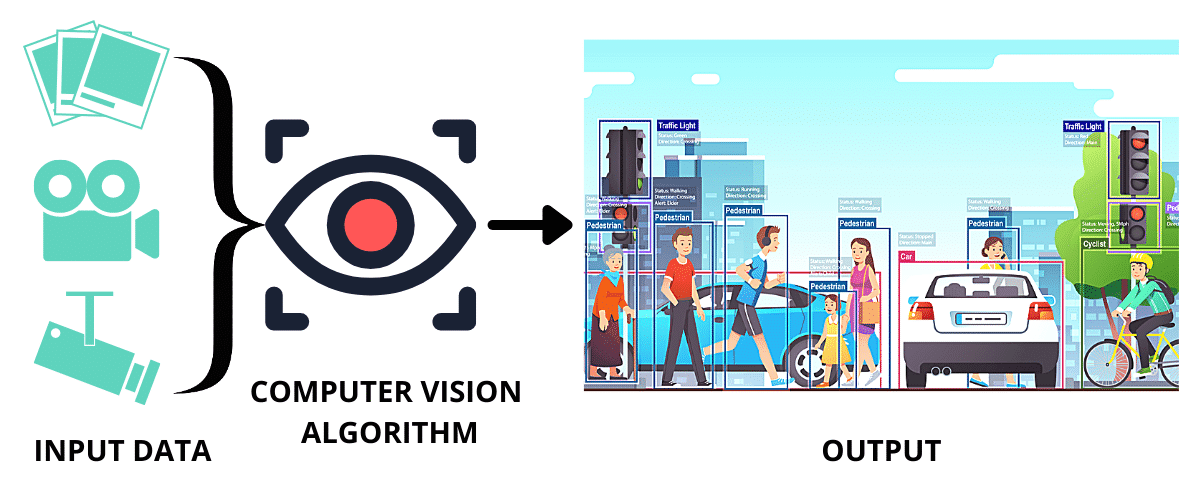
What is Computer Vision
Computer vision is a discipline of computer science that tries to mimic some of the complexity of the human vision system, allowing computers to recognize and computers can interpret things in images and videos in the same way that people can. Computer vision could only handle a restricted number of tasks before recently.
Thanks to developments in artificial intelligence and innovations in deep learning and neural networks, artificial intelligence has made significant progress in recent years, exceeding humans in various tasks linked to object recognition and classification. One of the driving forces for its rise is the amount of data we collect today, which is then used to train and improve computer vision.

CV in Retail Business
Customers purchase things or services from retail businesses to consume, use, or enjoy them. Products and services are often sold in-store, but some goods may be sold online or over the phone and then shipped to customers. Retail businesses include clothing, medicine, food, and convenience stores, to name a few. Leading retailers throughout the world include Walmart Inc. (United States), Amazon.com Inc. (United States), Costco Wholesale Corporation (United States), Schwarz Group (Germany), and The Kroger Co. (United States).

Retail is rapidly changing in the middle of a COVID-19 pandemic. Most markets believe that innovation adaptation has advanced significantly during the crisis. According to the study, the computer vision sector will grow from $2.9 billion in 2018 to $33.5 billion in 2025. The state of the retail industry, in particular, does not appear to be deteriorating. According to recent surveys, only 3% of merchants have integrated computer vision technology, but 40% wish to do so within two years. Market leaders like Walmart and Amazon (which has 27 self-driving stores dispersed across the state) and Chinese retail behemoths have long rolled out a variety of solutions from this technology stack.
Shops can use computer vision technology to improve their operations while increasing their customers’ shopping experience. Some of the most promising computer vision applications include inventory management, loss prevention, automated checkout, and behavioral analytics.
Real-life Use-Cases of CV in Retailing
Visibility of the stock: the ability to comprehend what is going on in the store When paired with technology, the video system can detect all forms of fraud attempts as well as questionable clients. Real-time imagery is used in retail to detect movement and assign colors to each floor area based on traffic flow. These techniques are used by merchants to better study customer behavior, test different merchandising approaches, and experiment with new layouts. With so many retail firms utilizing this technology for a variety of retail activities, it’s easy to see why it’s gained so much industry attention these days.
Stores with no cashiers: self-checkout or cashier-less venues have become increasingly popular in recent years. Using computer vision and deep learning technologies, it recognizes pricing and calculates the bill of products a customer selects. Amazon Go is the company’s breakthrough in autonomous retail. Computer vision technology can be used to detect an intent to buy when a customer picks up a product from the shelf. When the customer leaves the business, several cameras interpret this gesture as a purchase and charge it for product pickup.
Image recognition: based on machine learning detection of client behavior, the systems can recall distinct patterns of specific clients. Based on the possibilities of this technology, the shop is able to produce a customized marketing message (without compromising their privacy because those customers are usually nameless). If the cameras recognize a consumer who browsed a specific batch of products, such as TV sets, the system recognizes them and processes their information so that, if they haven’t already purchased the equipment, they will receive marketing communications about it after they leave the store.
Within the next several years, shoppers are likely to fully embrace image recognition technology to help improve in-store customer service and maybe showcase products by allowing buyers to scan a product with an app and retrieve current inventories. Similar t-shirts or products would be suggested, and buyers would be encouraged to buy a product and have it delivered to them by a sales representative.
Customer/client measurements: computer vision technologies can analyze customer behavior patterns and use that information to generate heat maps for businesses. As a result of the consumer behavior study, issues such as the best store layout to maximize profits, better product layout, which goods should be introduced, and what additional promotions should be considered may all be addressed.
In this method, retailers can determine which incentives attract customers and which repel them. AI-powered retail analysis tools are used for more than just observing customer behavior. It also covers exchanges between customers and associates, giving real-time insight into in-store service engagement. Such insights can be used to send out personalized marketing and message initiatives.
Stock management: buyers peruse online stores, and demand reliable information on the availability of specific products, as well as self-checkout. According to research, 64 percent of merchants expect to use data-driven solutions such as computer vision to optimize and manage inventories in the next few years. Retailers may develop an omnichannel shopping experience by automating inventory cycle counts and updating their inventory system in real-time with computer vision.
Avoid mislaying: the identification of suspect behavior connected to fraud and theft is one of the most prevalent uses of computer vision in avoiding mislaying. This method has already demonstrated its ability to prevent staff theft at counters by addressing common issues. This occurs when cashiers fail to scan all of the products or ring them up at different prices. Computer vision prevents such people from attempting to steal products by detecting every product in the checkout area and associating it to a transaction.
Summary
To summarize, computer vision is still in its early stages and far from attaining its full potential, despite being the most developed AI technology today with a wide range of real-world applications. It’s worth noting that owing to illumination, occlusion, or intricate sceneries, some cases are impossible to detect or follow. On the other hand, computer vision algorithms and the underlying technology are rapidly evolving. AI technology will be important for gaining a competitive advantage in better-delivering products and services.
Rhino Partners
We are South East Asia's best software development and data science company providing customised solutions for fintech clients worldwide.